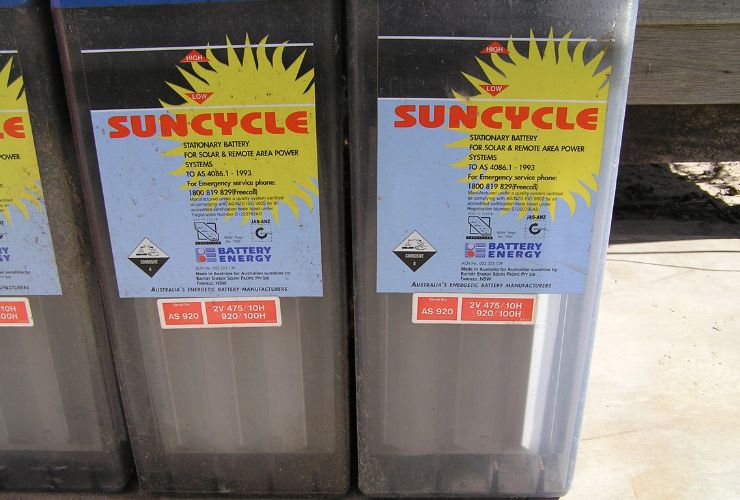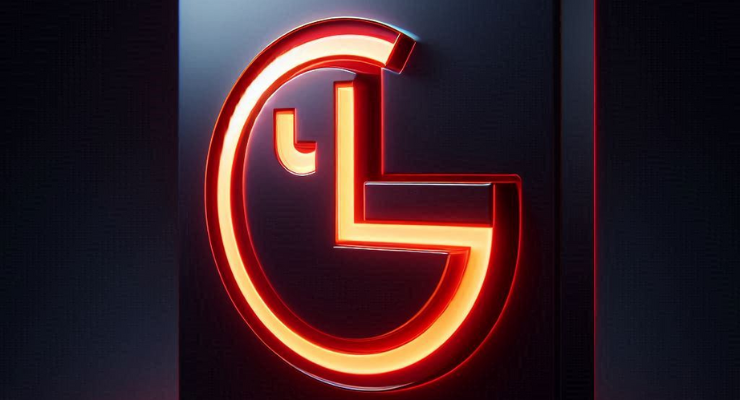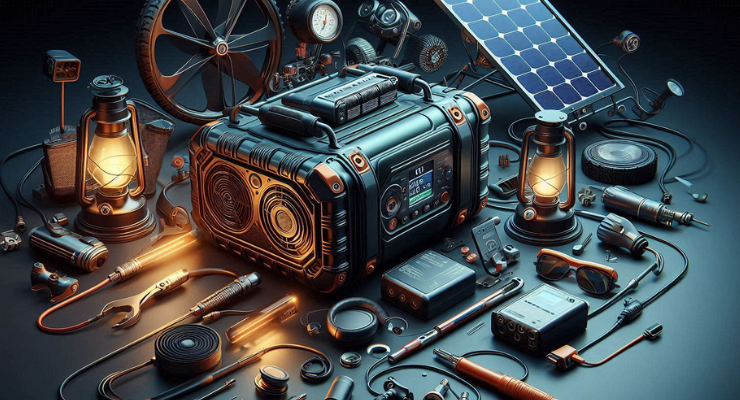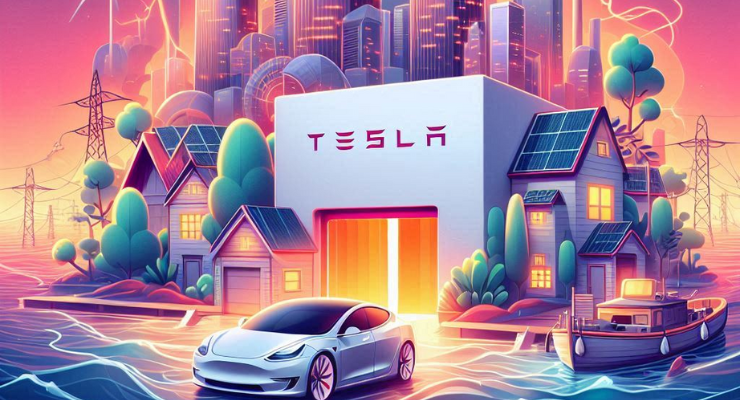
Fast read
Developing technology for solar home storage batteries is becoming more efficient and economically feasible. Lead-acid, nickel-based, flow batteries and lithium-ion batteries are the four most popular types of home storage batteries.
Lithium-ion batteries are the new and upcoming battery of choice, with a better energy density and a longer lifespan than lead-acid batteries. However, they are also the priciest. Although modern technologies are replacing lead-acid batteries, they are still reliable. In recent years lead-acid batteries have been built using hazardous materials.
Therefore, nickel-based batteries have better environmental and safety benefits. A more recent technology, flow batteries have a long lifespan, a high energy density, and the capacity to function at various temperatures. However, they are also expensive.
What do I need to know about solar batteries?
A solar storage battery is remarkably similar to a car battery. This means that the charge controller or battery management system chooses a voltage compatible with the battery’s voltage.
The battery management system also regulates the PV array’s voltage output to supply the right amount of electricity to the battery.
This electric current is subjected to an energy conversion process during charging. This process, when charging, transforms electrical energy into chemical energy. During discharging, chemical energy is converted back to electrical power.
Usually, this process also requires some energy, meaning energy will be lost during the charge and discharge process. As a result, we never will retrieve 100% of the power we have charged the battery.
Today four main types of solar batteries are available for you to purchase. These are:
- Lithium-ion
- Lead-acid
- Nickel-based, and
- Flow batteries
Lithium-ion batteries
Lithium-ion batteries, which were initially discovered in 1912, are made up of several different raw materials, mainly lithium, graphite, cobalt, and manganese.
Furthermore, the actual battery consists of three main components: the anode and cathode, a separator between two electrodes, and an electrolyte.
Because of the increase in electric vehicle interest, lithium-ion batteries are considered the ‘newer’ and more advanced battery technology. As EV producers popularised this battery technology, many solar battery manufacturers also began to use this technology in products such as Tesla’s Powerwall and LG’s RESU batteries.
Lithium-ion batteries are always improving as the electric car industry invests heavily in research for their advancement.
Furthermore, their higher energy density has overtaken Lead-acid batteries as the most popular battery choice. They also display a longer lifespan, with an average warranty life of 10 years.
In saying this, they are also the most expensive solar battery option. However, their increase in popularity and production numbers should lead to eventual decreases in price. Read our FAQ on why battery prices have not been reduced as yet – here.
Lead-acid batteries
Lead-acid batteries stand as pioneers in the solar industry, tracing their roots back to the early 1800s. These batteries may not look nice, but they are known for being reliable and strong in the solar industry.
The composition of these batteries involves metallic lead, lead dioxide, lead sulphate, and sulfuric acid. Picture it as a duo of electrodes immersed in a pool of sulfuric acid, working in tandem to store and release energy.
Termed as ‘deep-cycle batteries,’ they are the preferred choice for storing solar power off the grid. However, a new narrative is unfolding as advanced technology, notably lithium-ion batteries, gains prominence.
In essence, lead-acid batteries have held a steadfast role as the unsung heroes of solar power. Yet, the landscape is evolving, and sophisticated alternatives like lithium-ion batteries are stepping into the limelight. The solar industry is changing, and old batteries may soon be replaced by new innovative technology in the spotlight.

Nickel-based batteries
These batteries have been around since the late 1800s, but they haven’t become as popular as lead-acid batteries. The main thing in these batteries is Nickel Cadmium, and that’s a bit of a problem because it’s known to be extremely toxic.
Now, the good news is that GridEdge, a company working on improving batteries, has come up with some changes. They want to make these batteries better for the environment and safer for everyone to use. Even though the materials inside can be harmful, GridEdge has figured out a way to seal them up completely, making the batteries safe for use.
One impressive product from GridEdge is the Storm battery. People use it in homes, businesses, and places that aren’t connected to the regular power grid. The remarkable thing about the Storm battery is that it can work well in scorching hot or freezing cold temperatures, which is especially helpful in a country like Australia with its diverse climate.
It’s great because it runs on a basic battery system. You don’t have to do much to keep it working well.
In summary, despite these batteries not being widely known, recent improvements by GridEdge, like the Storm battery, show a positive direction. They are making efforts to be more environmentally friendly, safer, and easier to use. These batteries are a good choice for various locations and uses. As technology progresses, we might see these batteries playing a more significant role in how we store and use energy.
Flow batteries
Flow batteries are a new kind of solar battery. They use materials like vanadium, iron chromium, zinc-bromine, and zinc ion. The special thing about them is that they have a water-based liquid inside, which is why they are called ‘flow’ batteries.
Solar batteries, such as the ZCell from Australia, are now more affordable for homes because of recent advancements. They used to be expensive in the past.
One cool thing about flow batteries is that they can use up all their energy without causing any damage. Other batteries struggle with this, but flow batteries don’t.
The ZCell is a good example of how flow batteries are getting better for homes. The liquid inside these batteries not only helps store energy efficiently but also makes them perform well. This makes flow batteries different from traditional ones and a good choice for solar energy.
As technology gets better, flow batteries might become more affordable for homeowners. Being able to use almost all the energy stored in these batteries, without any harm, makes them a strong and flexible option for homes using solar power.
In summary, the progress in flow battery technology, seen in products like the ZCell, is making solar batteries more effective and suitable for homes. As these batteries become easier to get and cheaper, they have the potential to change how we store energy in homes.
In Conclusion
Solar batteries are improving, and there are four main types: Lithium-ion, Lead-acid, Nickel-based, and Flow batteries. Lithium-ion batteries, discovered in 1912, contain lithium, graphite, cobalt, and manganese, and they are popular for lasting a long time in products like Tesla’s Powerwall.
Lead-acid batteries, existing since the early 1800s, are reliable but bulky. Nickel-based batteries, such as Nickel Cadmium, are less favoured because of their potential harm.
Flow batteries, like the ZCell, are a recent kind. They use water inside and work well for homes using solar power. An interesting aspect is that they don’t get damaged when you use up all their energy.
As these batteries improve, they might become more affordable for homes. This could lead to changes in how we store energy in our homes.


